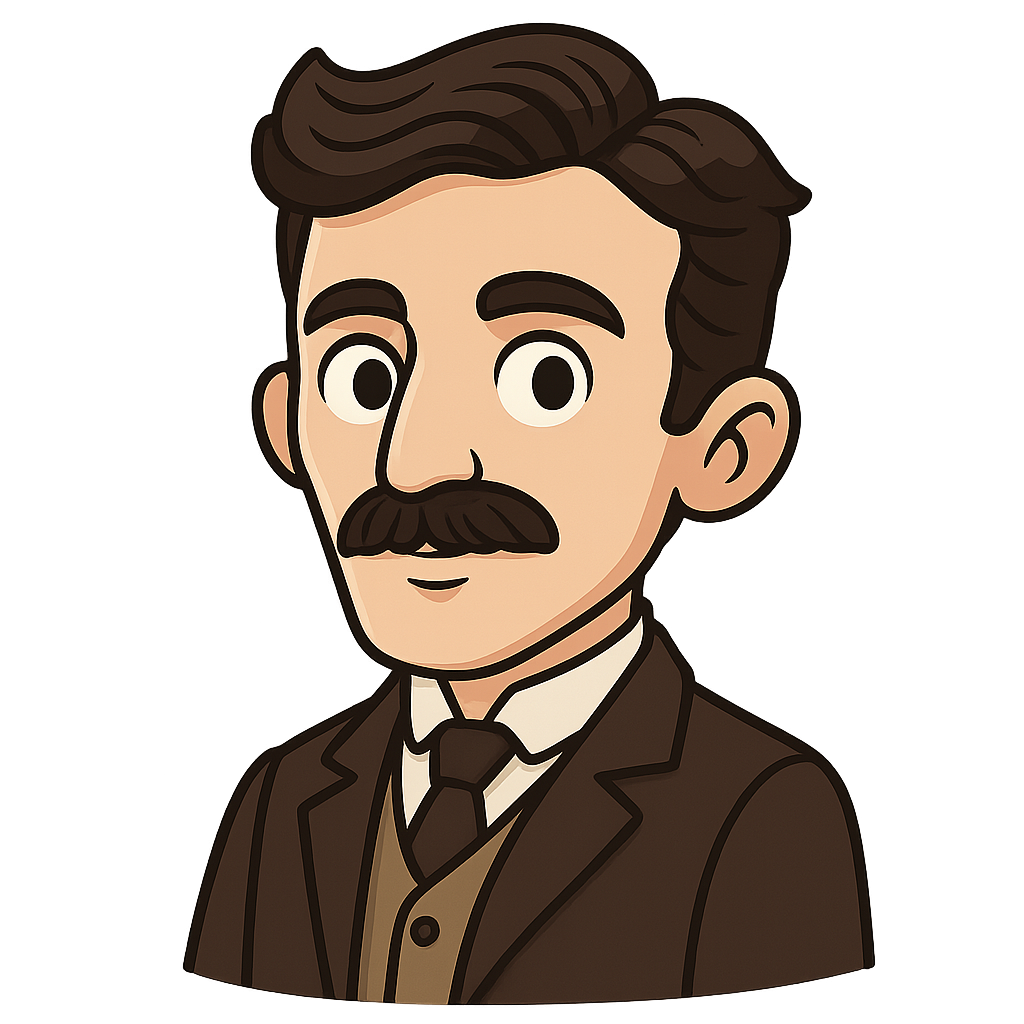Nikola Tesla: The Man Who Lit Up the World
Hello there. My name is Nikola Tesla, and I want to tell you the story of how my mind saw a future powered by invisible forces. I was born way back in 1856 in a small village called Smiljan, which was part of the Austrian Empire. My world was one of dark nights and bright ideas. The most exciting shows in my village were the thunderstorms. Lightning would tear across the sky, and I wasn't scared; I was fascinated. I saw that same electric magic everywhere. When I stroked my cat, Macak, his fur would crackle and tiny sparks would dance between my fingers and his ears. It felt like I had a secret connection to the energy of the universe. My mother, Đuka, was my biggest inspiration. She couldn't read, but her mind was brilliant. She invented all sorts of clever tools to make work easier around our home, like a mechanical eggbeater. She taught me to look at problems and imagine new ways to solve them. My mind worked in a special way. I didn't need a notebook or a workshop to create. I could build magnificent, complicated machines entirely in my imagination. I could see every gear turning and every wire connecting. I would test them, fix them, and perfect them, all before I even picked up a single tool. This ability to dream with my eyes open would become my greatest gift.
As I grew older, my dreams grew bigger than my small village. I imagined a world where electricity wasn't a luxury for a few, but a powerful force available to everyone, everywhere. With this dream burning inside me, I traveled to America in 1884. I knew I had to meet the most famous inventor of the time, Thomas Edison. At first, I worked for him, improving his inventions. But we soon had a big disagreement about the future of electricity. Mr. Edison had developed a system called Direct Current, or DC. You can think of DC like a one-way street; the electricity flows in one direction and can't travel very far from its source. I had a different, better idea: Alternating Current, or AC. My AC system was like a two-way highway. The electricity could switch directions, which allowed it to travel for hundreds of miles with very little power loss. I knew AC was the key to lighting up the entire world. Mr. Edison refused to believe me, so I left and found someone who did: an inventor and businessman named George Westinghouse. Together, we began a great challenge that people called the 'War of the Currents.' It was a battle of ideas. Finally, our big moment came at the 1893 Chicago World's Fair. We were hired to light up the entire event. I remember the feeling of excitement and nervousness as thousands of people gathered at night. Then, with the flip of a switch, over 100,000 light bulbs powered by my AC system blazed to life, turning the dark night into a brilliant, magical day. We had done it. We had shown the world the future.
Lighting up the world was only the beginning for me. I started dreaming of a world without any wires at all. I wanted to send not just messages, but power itself, through the air. To explore this idea, I built one of my most famous inventions: the Tesla Coil. It was a magnificent tower that could shoot enormous bolts of lightning into the sky, like a thunderstorm I could control. It was a beautiful and powerful sight. My biggest project was a giant tower on Long Island, New York, called Wardenclyffe Tower. I believed this tower could send information and electricity wirelessly to any point on the globe. Imagine getting power for your home right from the air. Unfortunately, I ran out of money before I could finish my grand experiment, and the tower was eventually torn down. It was one of the great sadnesses of my life, which ended in 1943. But even when my dreams didn't work out exactly as planned, the ideas behind them lived on. My work on wireless transmission helped lead to the invention of the radio, remote controls, and so many other things you use every day. So, when you turn on a light, listen to the radio, or use a remote control, remember the boy from a small village who saw sparks everywhere and dreamed of powering the world. Never stop being curious, and never be afraid to imagine a brighter future.
Reading Comprehension Questions
Click to see answer
